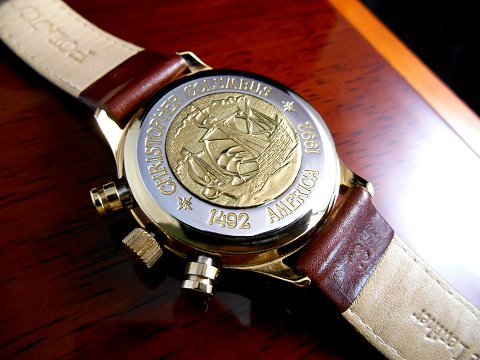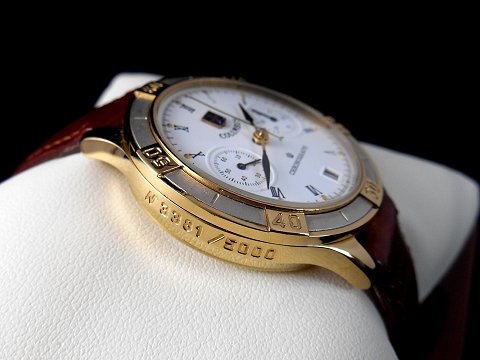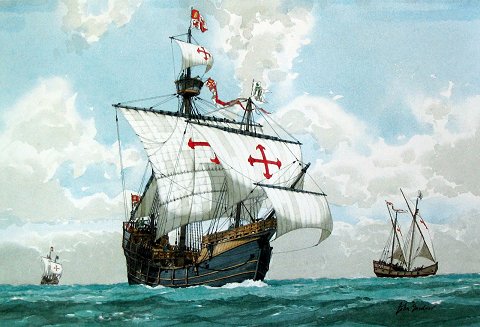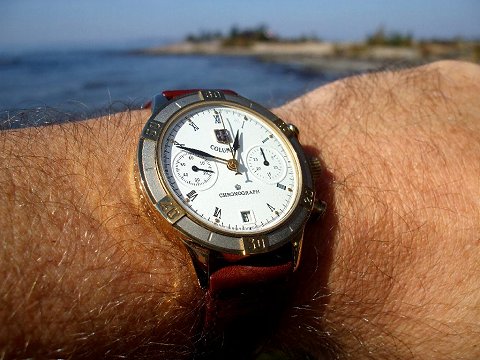Poljot Columbus
500th Anniversary of the Discovery of the Americas (1492-1992)

Over a decade in production, this Christopher Columbus commemorative piece is certainly one of the most popular, and beautiful, cal. 3133 chronographs ever produced by Poljot. It's difficult to say whether or not this was the first chronograph to feature the '92 Admiral casing, however my collection of early-nineties catalogues suggest that it was.
The early-1990s was the beginning of a era of somewhat flashy bi-colour chronograph cases produced, or commissioned, by the Poljot factory. By 2002 there way a definite move away from gold-coloured plating and the older-style cases, however this particular chronograph appeared unchanged in the final Poljot catalogue of that year, which is a true testament to it's ongoing popularity.
Case back

Upon first inspection of the movement, I almost decapitated myself when the medallion flew off while opening the case back. Luckily, it was no problem to reattach.
The gold-coloured medallion features a relief the "Santa Maria", the first ship that Columbus sailed across the Atlantic and discovered the Americas with. The ship was a Portuguese designed caravel, the first sailing ship capable of making headway against the strong winds and currents to allow navigation across the Atlantic. Columbus ran the ship aground of the coast of Haiti and was unable to salvage it, and as a result much of the crew was left behind to form the first, albeit unsuccessful, European settlement in the Americas.
Case side stamp

The first edition of this watch was limited to 500 pieces. However, as usual, when there is proven demand beyond the initial batch more editions are quick to follow. This one is number 3381/5000 and was produced ca. 1997.
Santa Maria

Columbus was the first European to discover the Americas, however, almost all of the Americas were inhabited by indigenous peoples by the time Columbus arrived. He would make a total of four round trips to the Americas, all to the Caribbean and Central America region, where he would set up and Govern (for a short time ) the first European settlements. He was also the first European to discover that there was a route through Panama to the Pacific Ocean; although, it's not clear whether or not he actually realized it.
Since no authentic paintings or sketchings of Christopher Columbus exist, I will only post a picture of the three sailing vessels that helped him discover the Americas. Columbus was of Italian decent, and according to his son, of above average build with pre-maturely greyed hair that was originally red, and red toned skin.
Wrist shot

Almost 125 years later Samuel de Champlain would land here, near Penetanguishene, Ontario - at the time, the furthest point west in Canada explored by a white man.